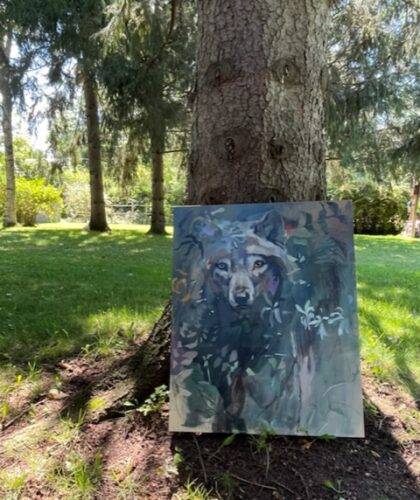by Carolyn Edlund
Reach a bigger market share with an increased range of prices.

Courtesy Brenda McMahon Gallery
Are most or all of the prices on your artwork at the higher end of the scale? Or is your portfolio mostly lower priced? Perhaps you keep prices moderate, but within a fairly narrow range. In any case, consider structuring your collection to offer a wider spread of price points. This will help you appeal to a larger audience and their respective pocketbooks.
In a difficult economy, it’s easy to believe you have to go low with prices in order to make sales. And, it’s not a bad idea to include works under $100 in your offering. But staying at the bottom of the pricing scale can also limit your income. Despite the news reports of people cutting back on expenses, there are still plenty of customers who value good art and are willing to spend what it takes to purchase and own something they love.
Take a look at what you currently have, and then look at how to expand.
Mid-range pricing
This middle tier probably represents most of your body of work. Over time, you come to know how to price based on your sales history and to recognize the sweet spot. This is your bestselling price range, where you can make regular sales and repeat sales without difficulty. It’s easy to stay in that comfort zone, but you can grow sales by going with a wider range that appeals to new buyers.
Lower end
Younger or newer customers may not be able to spring for one of your originals, so this price range allows them to “buy in” and own some of your work right away. As their income increases, or if they enjoy collecting and are willing to save for the right piece, they can make more expensive acquisitions going forward. Make sure to stay in touch with these new customers and cultivate them as collectors of your work. And, consider offering payment plans to help them purchase a terrific work of art now if they fall in love.

“Honeysuckle” 24”x30”, acrylic painting by Kimberly Santini
Selling reproductions is a good strategy to supplement your lower range. Painter Kimberly Santini waits until originals have sold, then sells reproductions and other products as a way to not only enable purchases from a different buyer base, but to keep an image in her portfolio after the initial sale has been made.
Aspirational prices
As you spread your prices to capture more prospects, uplevel your highest prices to reach another tier. This might be considered aspirational for a collector, but it’s also aspirational for you as the artist as you enter a new space in the market.
If you price your work per square inch or per linear inch, you could keep that rate steady and work larger, or create diptychs or triptychs to be sold only as a set. Or, design a high-end collection that is noticeable different or significantly more complex, and directed toward more affluent collectors. This can help you cross over into a new marketplace, potentially appealing to a whole new audience that shops at a different level.
Higher priced work can do double duty, acting as a draw to engage all types of customers. An artist who created fine art jewelry combined price ranges to make a very effective display. A showpiece necklace stood out on a tabletop in his booth, grabbing attention from intrigued shoppers interested in owning one of his designs. Displayed around the expensive showpiece were smaller, less complex and more affordable earrings, necklaces and bracelets from his line. Customers were still able to purchase original handmade pieces of his jewelry at a price that didn’t break their budget.
This also works well for 2D art. Higher priced works can act as anchors that lead into your display, where a range of work in different sizes and prices is available. Check this article for display techniques.
Commission work
Offering commissions is another way to increase your price point spread. Unless you are adding a simple personalization, you will have more time and energy invested in these projects. It is certainly appropriate to charge 20% to 30% more for special commissions. This should be clearly stated on your website, in your pricing materials, and in conversations with customers.



Good information and opportunities